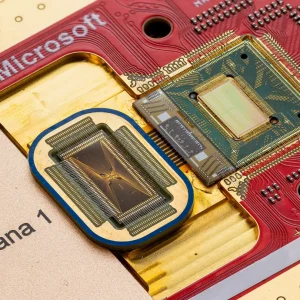
The rivalry of over 30 years between Intel and AMD has clearly come to an end after the pair announced the joint creation of a new chip.
After finally forming as a joint partnership after 35 years, as opposed to rivals, in November last year the pair have now created a new set of laptop chips with Intel’s Core line of the processor integrated with AMD’s Radeon graphics.

At the CES conference, the two companies announced their first product of the partnership in the form of Intel Core i5 and i7 chips known as the Intel 8th Generation Core powered by Radeon RX Vega M Graphics. The product was showcased at the conference as HP leading by example using the chip in the company’s latest product, Spectre x360 laptops.
By joining forces the two companies aimed to introduce much quicker mobile processors that have graphics capabilities as well, installed into thinner and lighter laptops in the future.
“Our collaboration with Intel expands the installed base for AMD Radeon GPUs and brings to market a differentiated solution for high-performance graphics,” Scott Herkelman, Vice President and General Manager, AMD Radeon Technologies Group, said in a statement according to the Economic Times.
“Together, we are offering gamers and content creators the opportunity to have a thinner-and-lighter PC capable of delivering discrete performance-tier graphics experiences in AAA games and content creation applications,” Herkelman added.
– AMD chip could control a car
– Chip security flaw expected to affect millions
– Tesla to develop AI chips
According to Intel, the new chip should enable gaming to run two to three times faster compared to an older system with Intel Core i7 chip and a Nvidia GTX 950M GPU that Intel once formed partnerships to create.
In addition to the increased speed, the chips are expected to consume substantially less energy, becoming more suitable for laptops.
The chips were initially targeted at the gaming market; however, Intel states that the processors have many more uses such as professional use, HD imaging as well as Virtual Reality and Augmented Reality.






